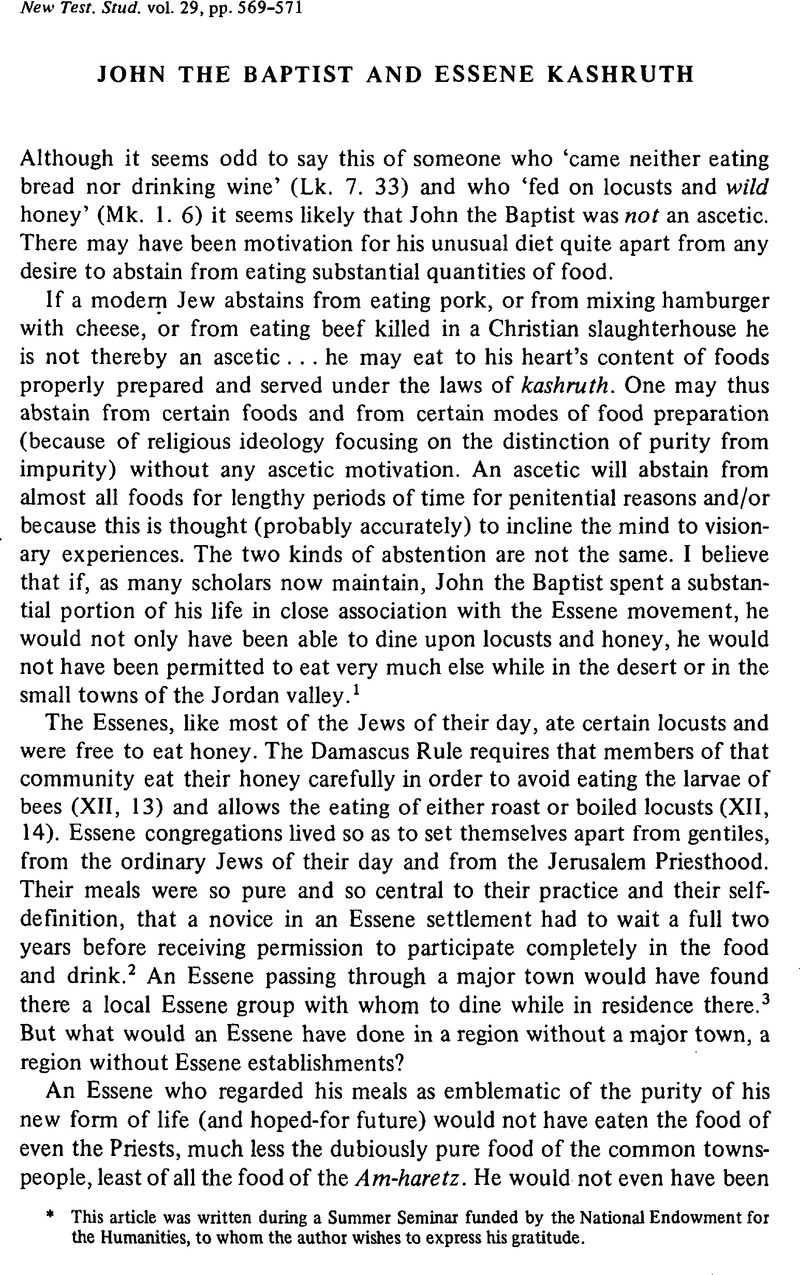Published online by Cambridge University Press: 05 February 2009

[1] That John had connection with Qumran and/or Essenes is now becoming a commonplace. The nature of this connection is far from clear. Most Christian writers, even the best, reason back to John from traditions of Christian asceticism. The excellent work by Jean Steinmann, Saint John the Baptist and the Desert Tradition (New York: Harper and Row, 1958Google Scholar), says, on page 63, that ‘Mark pictures John as a hermit living in the wilderness, dressed like the bedouins in a covering of camel hair, and eating locusts and wild honey’. William, Lasor writes, in The Dead Sea Scrolls and the New Testament (Michigan: Eerdmans, 1972) p. 148Google Scholar, that ‘John's ascetic way of life has been compared with the asceticism of Qumran. He “came neither eating nor drinking” and was probably under the Nazirite vow not to touch wine or strong drink’. Brownlee, W. H., in ‘John the Baptist in the New Light of Ancient Scrolls’ in The Scrolls and the New Testament (ed. Krister, Stendahl (Harper: New York, 1957)) p. 33, writes that ‘His diet of locusts and wild honey is difficult to imagine … The fare of John the Baptist … as frequently pointed out, represents the life of the desert nomad, who does not hesitate to eat small insects, including locusts or grasshoppers. One will note that this food represents that which grows by itself in nature, without cultivation or breeding. John the Baptist may have felt that by living with nature in the raw he was living close to God. This may represent a repudiation of civilization as corrupting’.Google Scholar
[2] Josephus, Wars, II, 8:7.Google Scholar
[3] Josephus, , Wars, II, 8:4.Google Scholar
[4] Steinmann, , op. cit. p. 59Google Scholar, and Leaney, A. R. C.The Rule of Qumran and Its Meaning (Philadelphia: Westminster, 1966) p. 184: ‘The word is quite different from the common Hebrew word for wine and shows that unfermented juice was the drink taken’.Google Scholar
[5] Josephus, , Wars, II, 8:5.Google Scholar
[6] Josephus, , Wars, II, 8:7.Google Scholar
[7] Josephus, , Wars, II, 8:8.Google Scholar